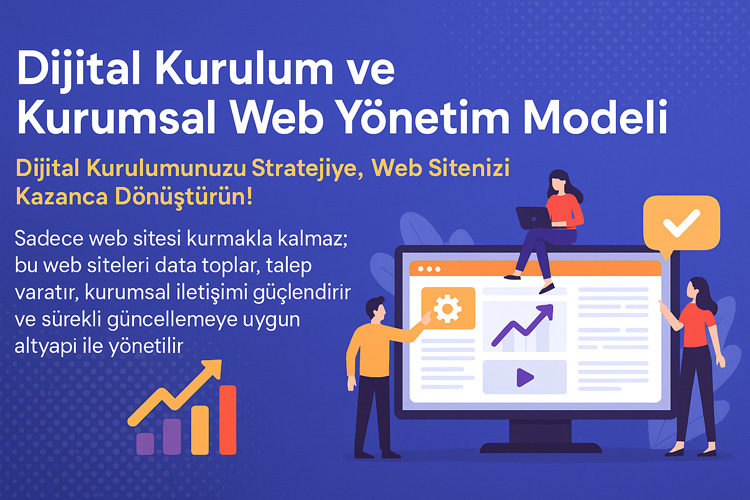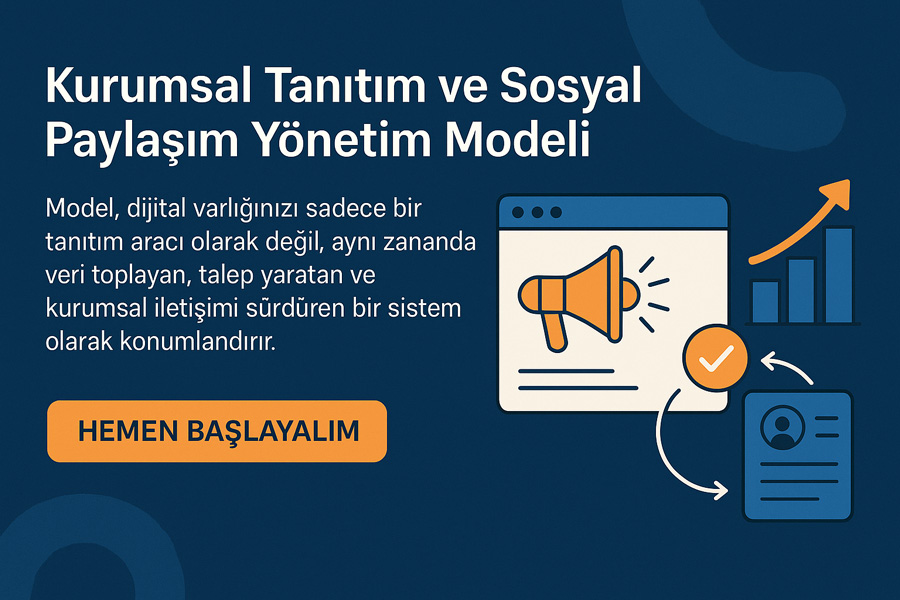The key to success in web design is creating an effective user experience (UX). Professional web design aims to create sites that meet the needs of users and offer them an intuitive and enjoyable experience. In this article, we will take a closer look at the importance and role of UX in professional web design.
In today’s digital world, the success of a website is directly related to the experience it offers to users. User experience refers to the overall satisfaction felt by everyone who visits the site. In professional web design, UX is a tool that facilitates users’ interaction with the site, informing them and ultimately enabling them to achieve the site’s goals.
A well-designed user experience can significantly improve website performance. Users spend more time on sites that are well-organized, load quickly, and have easy navigation. Additionally, UX-focused design helps increase conversion rates; because users can easily find what they are looking for and perform the action they want on the site without any problems.
Professional web design is not just about visual appeal; it also includes optimizing the user experience. An effective UX design improves users’ interactions with the site, delights them and increases the overall success of the site. Therefore, focusing on UX when designing your website not only provides aesthetic satisfaction, but also plays a critical role in achieving your business goals.
İçindekiler
ToggleKey Features of User Experience in Professional Web Design
In professional web design, user experience (UX) has a central role. An effective UX design makes it easier for visitors to interact with the site and provides them with a valuable experience. A well-designed website is based on understanding users’ needs and providing appropriate solutions to these needs. UX is important not only in terms of aesthetics but also functionality and usability. Therefore, understanding the fundamental aspects of user experience in professional web design is critical to providing a better experience for everyone who visits the site.
Principles of User-Centered Design Approach
User-centered design means shaping every aspect of the website in line with the needs and preferences of end users. This approach focuses on creating an experience that meets users’ expectations and delivers value to them. The key is to think from the user’s perspective and shape the design of the website based on that perspective. The principles of user-centered design include user research, modeling, and continuous feedback loops.
Ensuring Harmony of Visual Design and User Interaction
Visual design is an important element that directly affects users’ interaction with the website. Colors, typography, and images determine how users perceive and interact with site content. An effective visual design attracts users’ attention and guides them through the site, while also strengthening the brand identity. The harmony of visual and functional design elements allows users to navigate the website comfortably and efficiently.

Content Strategy and User Experience Relationship
In web design, content strategy is a key component of user experience. An effective content strategy provides users with valuable and relevant information and helps draw them deeper into the site. The content should answer users’ questions, attract their attention, and give them clear information about the products or services the site offers. Additionally, the layout and presentation of the content should enable users to easily find and understand information.
Ways to Increase Conversion Rates with UX Design
In professional web design, user experience (UX) plays a key role in increasing website conversion rates. Effective UX design ensures that users have a seamless experience on the site, encouraging them to take desired actions. This not only increases user satisfaction, but is also an important factor in achieving your business goals. Understanding the impact of UX design on conversion rates is vital for every website project.
Effective Call Actions and User Journey Optimization
Effective call actions (CTA) are a critical element in driving users to conversion. UX design is about integrating these actions into the natural flow of users so they can clearly understand what they need to do. Additionally, optimizing the user journey ensures users easily find what they are looking for and reach their conversion point seamlessly.
UX Elements Affecting Conversion
UX elements that affect conversion rates include site navigation, page loading speed, and content presentation. Users’ ability to easily navigate the site, fast loading times and clear, understandable content are the cornerstones of an effective conversion strategy. Each of these elements positively affects users’ actions on the site.
Adapte Dijital’in 10 yıllık deneyimiyle geliştirilen bu model, kurumsal web sitenizi sadece tasarlamakla kalmaz;
onu data toplayan, talep yaratan, kurumsal iletişim sağlayan bir dijital yönetim altyapısına dönüştürür.
Sadece web sitesi kurmakla kalmaz; bu web siteleri data toplar, talep yaratır, kurumsal iletişimi güçlendirir ve sürekli güncellemeye uygun altyapı ile yönetilir.
Turning User Feedback into Conversion
User feedback is key to improving your website’s UX design. Feedback based on users’ experiences shows which areas need improvement. Taking this information into account, you can make the necessary changes to increase user experience and therefore conversion rates.

The Importance of UX in Mobile Compatible Web Design
Mobile-friendly web design is a fundamental aspect of today’s internet usage habits. Users now often use their mobile devices to access information, shop or discover services. Therefore, mobile user experience (UX) has become a priority issue in web design. A good mobile UX design can increase site traffic and conversion rates by meeting users’ needs and providing them with a seamless browsing experience.
Mobile compatible web design is an integral part of today’s internet usage. The majority of users now access websites via mobile devices. Therefore, mobile user experience (UX) is more important than ever. A mobile-friendly design ensures users have a consistent and seamless experience across devices. While mobile UX increases the satisfaction of site visitors, it also positively affects conversion rates.
What does professional web design doContinue after reading our article It may be more useful to do so.
Mobile First Approach and User Expectations
The mobile-first approach refers to prioritizing mobile users at the beginning of the design process. This approach involves designing websites considering the needs and expectations of mobile device users. Mobile users expect elements such as fast loading times, easy navigation and interactive content. By adopting a mobile-first approach, you can optimize users’ mobile experiences and strengthen their interaction with the site.
Touch Screen Friendly Interface Design
Touchscreen-friendly interface design takes into account the touch-sensitive nature of mobile devices. This includes elements such as large touch targets, comfortable finger movements and easily accessible menus. A touchscreen-friendly design allows users to navigate the website easier and more effectively. Additionally, this type of design allows users to interact more conveniently and efficiently on mobile devices.
Optimizing Mobile Website Performance
Optimizing mobile website performance is an important aspect of user experience. Mobile users value fast loading times and efficient data usage. Therefore, techniques such as optimizing images, reducing page load times, and reducing data usage are critical to improving the performance of mobile websites. A performance-optimized mobile site increases user satisfaction and increases the likelihood of staying on the site longer.
FOR PROFESSIONAL WORK
Adapte Dijital’in 10 yıllık deneyimiyle geliştirilen bu model, kurumsal web sitenizi kurumunuzu/markanızı anlatan, tanıtan, güven yaratan, talep oluşturan bir dijital yönetim platformuna dönüştürür.
Adapte Dijital, bu modelde bir konumlandırma ajansı olarak çalışır. Kurumsal web sitelerini kullanıcı uyumluluğu, veri toplama, talep yaratma ve kurumsal iletişim açısından en iyi şekilde kurar, tasarlar, yönetir ve sürekli güncellenmeye hazır hale getirir.
Consult an Expert
Accessibility and Usability: Two Critical Components of UX Design
In professional web design, accessibility and usability form the basis of user experience (UX) design. An accessible website meets the needs of users with different abilities and technologies. Usability is necessary for users to easily understand and interact with the website. The integration of these two components provides an accessible and interactive web experience for everyone.
Best Practices for Accessible Web Design
Accessible web design ensures that your website is accessible and usable by all users. This ensures that anyone can access the website, including individuals with vision, hearing or motor skill limitations. Best practices include using alt text, keyboard navigation support, and optimizing color contrast. These applications make your website usable by a wider audience.
Usability Evaluation with User Tests
User testing is an effective way to understand how your website is perceived and used by real-world users. These tests reveal how users navigate your site, what features stand out, and what areas need improvement. Usability testing is a critical part of improving your website based on users’ needs and preferences.
Designing for All Users: Universal Design Principles
Universal design covers the principles of designing websites for people with different abilities, skills and access levels. This approach involves prioritizing usability and accessibility in every design decision. Universal design principles ensure your website is functional and accessible to every user, providing a more inclusive and barrier-free web experience.
Website Performance and UX: The Role of Speed
Website performance is a key component of user experience (UX). Users expect a fast and efficient website experience. A website’s loading speed affects users’ initial interactions with the site and is often associated with the overall perceived quality of the site. Therefore, speed can directly impact user satisfaction, conversion rates, and ultimately site success.
The Effect of Website Loading Speed on User Satisfaction
Website loading speed determines users’ initial reaction to the site. A fast-loading site increases user satisfaction and keeps them on the site longer. Conversely, a slow-loading website can lead to users becoming impatient and even abandoning the site. A high-performance website increases users’ trust in the site and the overall perceived value of the site.
Web Design Techniques That Improve Performance
A number of web design techniques can be used to improve website performance. These techniques include image optimization, compressing and combining CSS and JavaScript files, browser caching, and improving server response times. Additionally, by using modern web technologies and appropriate coding practices, it is possible to reduce page load times. Applying these techniques significantly improves the speed of the website and therefore the user experience.
Improving User Experience by Reducing Latency
Reducing lag times is an important way to improve user experience. Users expect web pages to load immediately and respond quickly to interactions. Performance improvements meet these expectations by reducing page load times and responding quickly to user interactions. Reducing latency makes users’ interactions with your site more fluid and enjoyable, which increases user loyalty and time spent on the site.
User-Centered Approach: The Difference of Adapted Digital
Adapte Digital takes a leading role in user experience (UX), which lies at the heart of professional web design. Adapte Digital provides a competitive advantage to its customers by prioritizing not only aesthetics but also functionality and user interaction in web design.
Adapte Digital designs impressive and memorable websites using innovative design approach and the latest technologies. The agency’s professional team helps brands showcase their digital showcases in the most effective way by ensuring the perfect harmony of visual design and user interaction. Adapte Digital’s works impress visitors by offering aesthetics and functionality together.
Conclusion: Achieve Success with Adapt Digital
Adapte Digital stands out in the industry with its projects that successfully reflect the importance and role of user experience in web design. The agency’s expert team enables brands to stand out in the digital world by offering unique and innovative solutions in every project. Working with Adapte Digital means not just having a website, but also ensuring that your brand leaves a strong mark in the digital world.


















































